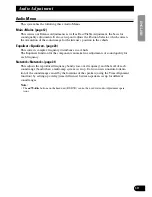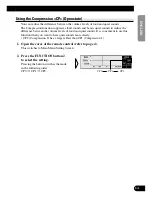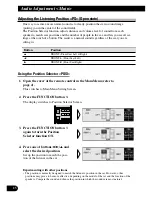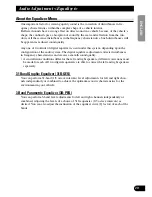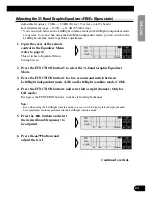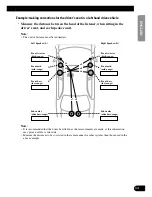
Relation Between Frequency Characteristics and Sound Quality
Sound quality generally has the following characteristics, depending on the frequency.
Refer to these characteristics when making adjustments.
q
This sound range feels almost like pressure on the ears of the listener, particularly if the
sound is too strong.
w
In this range, the listener feels the heavy bass. This is also the range in which the
impact of the sound is felt in the body. Excessive sound in this range will impair the
clarity of the overall sound.
e
The sound range required for bass. A lack of sound in this range results in a weak bass
impact, while excessive sound will muffle the overall sound. A clear reproduction lends
depth to the overall sound.
r
This is the sound range in which the sound signals are most dense and where the sound
outline is created. A lack of sound in this range results in a lack of warmth. Excessive
sound dims clarity.
t
The sound range required for the core of the sound. A lack of sound in this range
weakens the core. An important range for keeping the overall sound quality in balance.
y
In this range, the sharp, expansive sounds of the brass and electric guitar are felt.
However, excessive sound in this range is tiring on the ears.
u
This sound range adds color and gaiety to the overall sound. A lack in sound in this
range will result in a muffled overall sound, while excessive sound will enhance the
metallic aspects.
i
This range is required for the glamorous sound of the cymbals. However, this range
does not contain the basic frequencies of almost all the instruments. Therefore, if the
sound in this range is lacking somewhat, the overall sound quality will not deteriorate
markedly.
q
w
e
r
t
u
y
i
Bass Drum
Tenor Saxophone
Electric Organ
F l u t e
Tr u m p e t
P i a n o
G u i t a r
V i o l i n
P i c c o l o
Bass
Baritone
Tenor
A l t o
Soprano
Cymbals
22
ENGLISH
ESPAÑOL
DEUTSCH
FRANÇAIS
ITALIANO
NEDERLANDS



